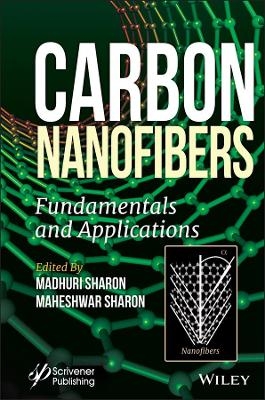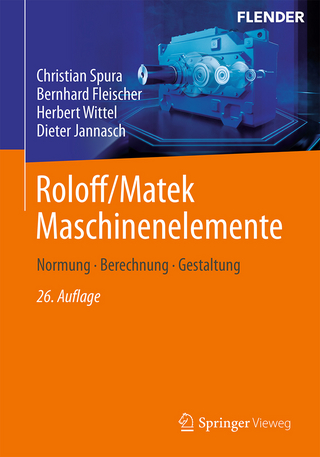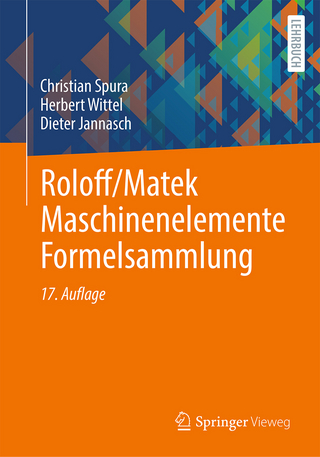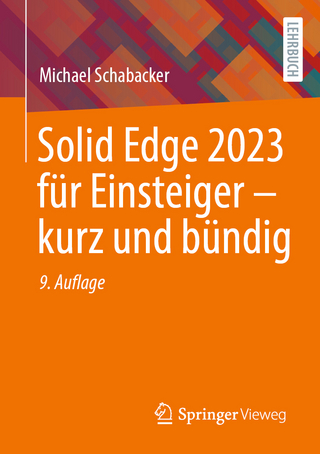
Carbon Nanofibers
John Wiley & Sons Inc (Verlag)
978-1-119-76881-4 (ISBN)
The second section of the book encompasses the various applications of CNF, such as its use as a possible superconductor to adsorb and store hydrogen, and as a microwave absorber. The application of CNF for environmental concerns is also detailed by assessing its usefulness in dye and heavy metal removal from polluted water. The applications that are addressed include lithium-ion battery, solar cell, antenna, cosmetics, usefulness in regenerative medicine, as well as various aspects of agrotechnology.
Madhuri Sharon, (Retd. Director at Reliance Industries), PhD from Leicester University UK, postdoctoral research from Bolton Institute of Technology U.K., is currently the Director of NSN Research Centre for Nanotechnology & Bionanotechnology and Managing Director of Monad Nanotech as well as Adjunct-Professor University of Mumbai & Professor-Emeritus JJT University, India. She has published more than 130 papers, 4 books and 11 patents. Her research focuses on the synthesis, biosynthesis and application of various nanomaterials (graphene oxide, carbon dots, carbon nanomaterials and nanometals) in drug-delivery. Maheshwar Sharon, (Retd. Professor IIT Bombay) PhD from Leicester University, U.K, and postdoctoral research from Bolton Institute of Technology, U.K., is Director of NSN Research Centre for Nanotechnology & Bionanotechnology and Technical Director of Monad Nanotech as well as Adjunct-Professor at the University of Mumbai, India. His specializations are electrochemistry (photoelectrochemistry & battery), solid state chemistry (diffusion & electrical properties), superconductivity, carbon (fullerenes, nanocarbon, low band gap semiconductor, etc.) and energy: photovoltaic wet & dry solar cells. For his contribution to carbon he was awarded the 'Bangur Award'. He has five patents, five books and 173 publications to his credit.
Foreword xix
Preface xxi
1 An Introduction to Carbon Nanofiber 1
Maheshwar Sharon
1.1 Introduction 1
1.1.1 History of Carbon Fiber 2
1.1.2 What is a Carbon Fiber? 3
1.1.3 Structures of Carbon Fibers 5
1.1.4 Synthesis of Carbon Fibers 6
1.1.4.1 Carbon Fibers from PAN 6
1.1.5 Properties of Carbon Fibers 6
1.2 Properties of Carbon Nanofiber and How It Differs from Carbon Nanotube 7
1.2.1 History of CNF 8
1.2.2 Role of Surface States in Controlling the Properties of CNFs 9
1.3 Synthesis of Carbon Nanofiber (CNF) 11
1.3.1 Chemical Vapor Deposition (CVD) Method 11
1.3.2 Precursors for CNF 12
1.3.3 Use of Catalyst in the Synthesis of CNF 12
1.3.4 Selection of Variable Parameters for Growth of CNF 13
1.3.5 Epitaxial Growth of Aligned CNF 14
1.3.6 Mechanism of CNF Synthesis 14
1.4 Properties of CNF and Its Composites 15
1.5 Applications of CNF 15
1.6 Health Hazards of CNF 18
1.7 Summary 19
References 19
2 Biogenic Carbon Nanofibers 21
Madhuri Sharon
2.1 Introduction 21
2.2 Plants as Source of Precursor for CNF Synthesis 22
2.2.1 Plant Parts 26
2.2.1.1 Fibrous Plant Material Used for Synthesizing CNF 26
2.2.1.2 Characterization of CNF Obtained by Pyrolysis of Plant Seeds 29
2.2.2 Plant Metabolites 34
2.2.2.1 Characterization of CNF Obtained by Pyrolysis of Plant Metabolites 36
2.3 CNF Derived from Parts of Different Plants and Their Applications 37
2.3.1 Hydrogen Storage in CNF 37
2.3.2 Removal of Heavy Metals by CNF 38
2.3.3 Microwave Absorption Capacity of CNF 39
2.3.4 CNF as Electrocatalysts for Microbial Energy Harvesting 40
2.3.5 CNF as Regenerative Medicine 40
2.3.6 CNF as Deodorizer 41
2.3.7 CNF Composites for Strong and Lightweight Material 41
2.3.8 Biogenic CNF as Supercapacitor 42
2.3.9 Plant-Derived CNM for Use in Coatings 43
2.4 Comparative Structure of Chemically and Biogenically Synthesized CNF 43
2.4.1 CNF Synthesized from Chemical Precursors 43
2.4.2 CNF Synthesized from Plant Parts or Plant Metabolites as Precursors 44
2.5 Concluding Remarks 45
References 45
3 Role of Nanocatalysts in Synthesis of Carbon Nanofiber 49
Suman Tripathi
3.1 Introduction 49
3.2 Nanocatalysts 50
3.2.1 Concept of Nanocatalysis 51
3.2.2 Metallic Nanoparticles (NP) as Catalyst 52
3.2.3 Types of Nanometals as Catalyst 53
3.2.3.1 Nanometal Colloids as Catalysts 54
3.2.3.2 Nanoclusters as Catalysts 54
3.2.3.3 Nanoparticles as Catalysts 54
3.2.3.4 Nanopowder as Catalysts 54
3.3 Methods for the Preparation of Nanoparticles 54
3.3.1 Hydrothermal Method of Metal Nanoparticles 55
3.3.2 Microwave-Irradiated Synthesis of Metal Nanoparticles 55
3.3.3 Dendrimer-Assisted Synthesis of Metal Nanoparticles 55
3.3.4 Reverse Micelle Method of Metal Nanoparticles 56
3.3.5 Co-Precipitation Method of Metal Nanoparticles 57
3.3.6 Biogenic Synthesis (Green Synthesis) Method of Metal Nanoparticles 58
3.4 Role of Nanocatalyst in the Production of CNF 60
3.5 Different Types of CNF 61
3.6 Synthesis of Carbon Nanofiber (CNF) Using Nanocatalysts 64
3.6.1 Laser Ablation Method 65
3.6.2 Chemical Vapor Deposition (CVD) 65
3.6.3 Self-Propagating High-Temperature Synthesis (SHS) or Combustion Synthesis (CS) 67
3.6.4 Floating Catalyst Method 68
3.6.5 Electrospinning Method 68
3.6.5.1 Polyacrylonitrile (PAN) 70
3.6.5.2 Pitch 70
3.6.5.3 Cellulose 70
3.7 Summary 71
References 71
4 Carbon Nanofiber and Polymer Conjugate 75
Anuradha Pandey Dubey
4.1 Introduction 75
4.2 What is a Composite? 76
4.3 Polymers Used for Conjugating CNF 79
4.3.1 Starch 79
4.3.2 Cellulose 81
4.3.3 Collagen 81
4.3.4 Chitosan 82
4.3.5 Gelatin 83
4.3.6 Fibrin 83
4.3.7 Alginate 84
4.3.8 Poly Vinyl Alcohol (PVA) 84
4.3.9 Poly Ethylene Glycol (PEG) 84
4.3.10 Poly Caprolactone (PCL) 85
4.3.11 Poly Lactic-co-Glycolic Acid (PLGA) 85
4.3.12 Poly Glycerol Sebacate (PGS) 86
4.4 Approaches Involved in Synthesizing Polymer/CNF Nanocomposites 86
4.5 Various CNF Composites 87
4.5.1 CNF/Epoxy Composites 88
4.5.2 CNF/Phenolic Resin Composites 89
4.5.3 CNF/Polyaniline (PANI) Composites 89
4.5.4 CNF/Poly (Ether Ether Ketone) Nanocomposite 90
4.5.5 CNF/Biopolymers Nanocomposites 90
4.5.6 CNT/CNF-Epoxy Nanocomposites 91
4.6 Possible Futuristic Applications of CNF/Polymer Composites 91
4.6.1 Sensors 92
4.6.2 Batteries 93
4.6.3 Food Packaging 94
4.7 Summary 95
References 95
5 Characterization of Carbon Nanofiber 99
Sundeep Deulkar
5.1 Introduction 99
5.2 Microscopic Characterization Techniques 99
5.2.1 Atomic Force Microscopy (AFM) 100
5.2.2 Scanning Tunneling Microscopy (STM) 103
5.2.3 Electron Microscopy for Morphology and Surface Characterization 104
5.2.3.1 Scanning Electron Microscopy (SEM) 104
5.2.3.2 Transmission Electron Microscopy (TEM) and Scanning Transmission Electron Microscopy (STEM) 108
5.3 Spectroscopic Characterization 112
5.3.1 Raman Spectroscopic Studies of Carbon Nanofibers 113
5.4 Spectroscopic Analysis of CNF by XRD 117
5.5 Measurement of Mechanical Properties of CNF 122
5.5.1 Tensile Strength Testing/Tension Testing 122
5.5.2 Young's Modulus 123
5.6 Optical Property Analysis of CNF 127
5.6.1 Ellipsometric Method for CNF and MCNF 128
5.6.2 UV-Vis-NIR Spectrophotometric Method for ACNF Analysis 129
5.6.3 Measuring Optical Band Gap 131
5.7 Thermal Properties and Thermal Effect Analysis 132
5.7.1 Thermogravimetric Analysis (TGA) 132
5.7.2 Differential Scanning Calorimetry (DSC) 134
5.7.3 Differential Thermal Analysis (DTA) 135
5.7.4 Thermal Conductivity 135
5.8 Specific Surface Area (SSA) Determination of CNF 139
5.8.1 Methylene Blue (MB) Test 140
5.8.2 Brunauer-Emmett-Teller (BET) Specific Surface Areas 142
5.9 Characterization of Electrical Properties 145
5.9.1 Two-Probe and Four-Probe Methods for Resistivity Measurement 148
5.9.2 Four-Probe Methods for Resistivity Measurement 149
5.9.3 Tunneling Atomic Force Microscopy (TUNA) Analysis 150
5.9.4 Hall Effect Measurement 152
References 154
6 Carbon Nanofiber - A Potential Superconductor 159
Harish K. Dubey
6.1 Introduction 159
6.2 Superconductors 161
6.2.1 Theory of Superconductors 161
6.2.2 Measurement Technique of Superconductivity 163
6.2.3 Types of Superconductors 163
6.3 History of Existing Superconductors 165
6.4 Superconductivity in Organic Materials 168
6.5 Can Carbon Nanofiber Also Be a Possible Superconductor? 169
6.6 Summary 173
References 173
7 Carbon Nanofiber for Hydrogen Storage 175
Bholanath Mukherjee
7.1 Introduction 175
7.2 Hydrogen - Its Advantages and Disadvantages as Source of Energy 176
7.2.1 Advantages 177
7.2.2 Disadvantages 177
7.3 Methods of Hydrogen Storage 178
7.3.1 Storage of Liquid Hydrogen 178
7.3.2 Storage of Gaseous Hydrogen 178
7.3.2.1 In Metal Hydride Storage Tanks 178
7.3.2.2 Storage of Compressed Hydrogen in High-Pressure Tank 179
7.3.2.3 Hydrogen Storage in Glass Microspheres 179
7.3.2.4 Storage in Array of Glass Micro Tubules/Capillaries 180
7.3.2.5 Storage of Hydrogen in Chemicals 180
7.3.2.6 Storage of Hydrogen in Metal Amidoboranes 180
7.3.2.7 Storage of Hydrogen in Metal Organic Framework System 181
7.4 Different Forms of Carbon and Nanocarbon for Storage of Hydrogen 181
7.4.1 Activated Carbon 182
7.4.2 Single-Walled Carbon Nanotubes (SWCNTs) 184
7.4.3 Multi-Walled Carbon Nanotubes (MWCNTs) 187
7.4.4 Metal-Doped Carbon Nanotubes 188
7.4.5 Graphene and the Like 189
7.5 Carbon Fibers for Storage of Hydrogen 191
7.6 Pyrolyzed Natural Fibers from Plant/Animals to Store Hydrogen 192
7.6.1 Carbonization/Pyrolysis 192
7.7 Summary 201
References 201
8 Carbon Nanofiber for Microwave Absorption 211
Dattatray E. Kshirsagar
8.1 The Need to Develop a Microwave Absorber 211
8.2 Types of Microwave Absorbers 212
8.2.1 Resonant Absorber 213
8.2.2 Broadband Absorbers 215
8.2.3 Magnetic Absorbers 217
8.2.4 Dielectric Absorber 218
8.2.5 Metal Absorber 220
8.3 Considerations for Nano Absorbers 221
8.3.1 Nanoferrite Absorber 222
8.3.1.1 Limitations of Ferrites 222
8.4 The Radars 223
8.4.1 Detection and Ranging 223
8.4.2 Multi-Band 3D Radar 223
8.4.3 Quantum Radar 224
8.4.4 LIDAR (Light Imaging Detection & Ranging) 225
8.5 Role of CNF in Microwave Absorption 226
8.6 Need for Fabricating a CNF and Polymer Composite 228
8.7 Summary 230
References 232
9 Carbon Nanofiber for Removal of Dye from Aqueous Medium 235
Sanjukta Bhowmik
9.1 Introduction 235
9.2 Morphology of Biogenic and Chemically Synthesized CNFs from Different Precursors 236
9.2.1 Chemical Vapor Deposition Method (CVD) 237
9.2.2 Plasma-Enhanced Chemical Vapor Deposition (PECVD) 240
9.2.3 Electrospinning of Polymer Fibers 241
9.3 Novel Dye Removal Properties of CNF 243
9.4 Absorption of Different Dyes 245
9.5 Summary 248
References 249
10 Carbon Nanofiber to Remove Heavy Metals from Aqueous Medium 251
Jayashri Shukla
10.1 Introduction 251
10.1.1 What Are Heavy Metals? 251
10.1.2 List of Heavy Metals 252
10.1.3 Sources of Heavy Metals 252
10.2 Are Heavy Metals Essential for Living Beings? 253
10.2.1 Damaging Effect of Heavy Metals on Biosystem 253
10.2.1.1 Arsenic 254
10.2.1.2 Cadmium 254
10.2.1.3 Chromium 255
10.2.1.4 Lead 256
10.2.1.5 Mercury 256
10.2.2 Heavy Metal and Soil Toxicity 257
10.2.3 Heavy Metal and Plant Toxicity 258
10.2.4 Toxic Effects of Heavy Metals on Aquatic Environment 258
10.3 Methods Used for Removal of Heavy Metals 258
10.3.1 Adsorption 259
10.3.1.1 Adsorption on New Adsorbents 259
10.3.1.2 Adsorption on Modified Natural Materials 259
10.3.1.3 Adsorption on Industrial By-Products 260
10.3.1.4 Adsorption on Modified Agricultural and Biological Wastes (Biosorption) 263
10.3.1.5 Adsorption on Modified Biopolymers and Hydrogels 263
10.3.2 Membrane Separation/Filtration 265
10.3.3 Electrodialysis and Photocatalysis 269
10.3.4 Chemical Oxidation and Advanced Oxidation 269
10.3.5 Chemical Precipitation 269
10.3.6 Chemical Coagulation 270
10.3.7 Chemical Stabilization 271
10.3.8 Ion Exchange 271
10.3.9 Waste LCD Panel Glass 271
10.3.10 Electrolytic Recovery or Electrowinning 272
10.3.11 Electrodialysis 272
10.3.12 Photocatalysis 272
10.4 Evaluation of Heavy Metals Removal Processes 274
10.5 Role of CNF in Removing Heavy Metals 275
10.5.1 Suitability of Chemically Synthesized CNF for Heavy Metal Removal 277
10.5.2 Suitability of Biogenic CNF 277
10.6 CNF to Remove Heavy Metals 279
10.7 Summary 284
References 284
11 Carbon Nanofiber as Electrode in Li-Ion Battery 291
Manisha Khemani
11.1 Introduction 291
11.1.1 Why Lithium? 292
11.2 Types of Lithium-Ion Batteries 294
11.2.1 Lithium Nickel Manganese Cobalt Oxide Battery 294
11.2.2 Lithium Cobalt Oxide Battery 294
11.2.3 Lithium Manganese Oxide Battery 294
11.2.4 Lithium-Titanate Battery 295
11.2.5 Lithium Iron Phosphate Battery 295
11.3 Theory of Generation of Power in Lithium Battery 295
11.3.1 Positive Electrode or Cathode 295
11.3.2 Negative Electrode Anode 296
11.3.3 Electrolyte 296
11.4 Role of Carbon, Lithium and Cobalt in Li-Battery 297
11.4.1 Advantages of LIB 300
11.4.2 Disadvantages of LIB 302
11.5 Role of CNF in Lithium Battery and Possibility of Increasing Its Efficiency 303
11.6 Recent Advances in Lithium Battery Utilizing Carbon Nanomaterial and CNF 305
11.6.1 Polyacrylonitrile (PAN) 306
11.6.2 Walnut Shell 306
11.6.3 FeOx-CNT/CNF Composite 306
11.6.4 Carbon Nanobeads (CNB) from Camphor 306
11.6.5 Tea Leaves 307
11.6.6 Various Carbon Materials 308
11.7 Summary 309
References 309
12 Carbon Nanofiber and Photovoltaic Solar Cell 313
Kailash Jagdeo and Maheshwar Sharon
12.1 Introduction 313
12.2 Formation of a Semiconducting Material 314
12.2.1 Introduction to P-N Junction 316
12.3 Semiconductors for Solar Cell 320
12.4 Attempts Made in Making Carbon-Based Solar Cell 320
12.5 Is CNF a Suitable Material for Solar Cell? 321
12.6 Summary 327
References 327
13 Application of Carbon Nanofiber in Antenna 331
Mahesh Partapure
13.1 Introduction 331
13.2 Radiation Types and Characteristics of Antenna 333
13.2.1 Radiation Density 334
13.2.2 Radiation Pattern 334
13.2.3 Directivity 335
13.2.4 Gain 335
13.2.5 Effective Area 336
13.2.6 Input Impedance 336
13.2.7 Impedance Matching 336
13.2.8 Return Loss and Voltage Standing Wave Ratio (VSWR) 336
13.3 Carbon Nanomaterial 337
13.4 Application of Carbon Nanofibers in Antenna 338
13.5 Summary 339
References 340
14 Carbon Nanofiber in Cosmetics 341
Archana Singh
14.1 Introduction 341
14.2 What is a Nanocosmetic 342
14.3 Cosmetics with Nanoparticles in Today's Market 342
14.4 Nanoparticles Used in Cosmetics 344
14.4.1 Titanium Dioxide (TiO2) 344
14.4.2 Zinc Oxide (ZnO) 346
14.4.3 Gold Nanoparticles 348
14.4.4 Silver Nanoparticles 349
14.4.5 Selenium Nanoparticles 350
14.5 Nano-Compositions Used for Loading and Delivery of Nanoparticle 351
14.5.1 Nanoliposomes 352
14.5.2 Solid Liquid Nanoparticles (SLN) 353
14.5.3 Cubosomes 354
14.5.4 Dendrimers 355
14.5.5 Nanocrystals 356
14.6 Cosmetics Containing Carbon Nanomaterials 357
14.6.1 Nanoforms of Carbon for Cosmetics Used in Ancient India that Still Prevail Today: Herbal Kajal/Kohl 357
14.6.2 Carbon-Based Cosmetics 358
14.6.3 Contemporary Cosmetics Using Carbon 358
14.7 Can Activated Carbon, Carbon Black and Carbon Nanotubes Be Replaced with CNF for Use in Cosmetics? 359
14.8 Summary 361
References 362
15 Carbon Nanofiber in Regenerative Medicine 365
Pramod Desai
15.1 Introduction 365
15.1.1 Tissue Engineering - Concept in a Nutshell 365
15.1.2 Why Carbon Nanotubes Are Versatile Scaffolds 367
15.2 Cell Tracking and Labeling 368
15.2.1 Optical Labeling 368
15.2.2 Magnetic Resonance Imaging (MRI) Contrast Agent 369
15.2.3 Radio Labeling 370
15.3 Sensing Cellular Behavior 371
15.4 Augmenting Cellular Behavior 372
15.5 Carbon Nanotubes as Structural Support for Tissue Engineering 374
15.6 Cytotoxicity of Carbon Nanofiber (CNF) 375
15.7 Biocompatibility of Carbon Nanofibers 377
15.7.1 CNTs with Neuronal Cells 378
15.7.2 CNTs with Osteoblast Cell 379
15.7.3 CNTs with Antibody Interactions 380
15.7.4 Ion Channel Interactions with CNTs 380
15.8 Dispersion of Carbon Nanofibers 380
15.8.1 Sonication 380
15.8.2 Stabilization with Surfactant 381
15.8.3 Covalent Functionalization 381
15.9 Summary 381
References 382
16 Carbon Nanofibers and Agro-Technology 389
Manisha Sharan and Madhuri Sharon
16.1 Introduction 389
16.1.1 The Importance of Nanoscale 390
16.1.2 Carbon Nanomaterials 390
16.2 Carbon Nanofibers 391
16.3 Carbon Nanofiber and Agriculture 391
16.3.1 CNF for Plant Growth and Crop Yield 393
16.3.1.1 Seed Germination 394
16.3.1.2 CNF as Fertilizer 395
16.3.1.3 CNF as Plant Growth Stimulator 396
16.3.2 CNF for Plant Protection 396
16.3.2.1 CNF as Antimicrobial and Antifungal for Surface Coating 396
16.3.2.2 CNF as Support for Pesticides, Herbicides and Insecticides 398
16.3.3 CNF for Soil Improvement 398
16.3.4 CNF for Controlled Environment Agriculture 398
16.3.5 CNF for Precision Farming 399
16.3.5.1 CNF and Nanosensors for Diagnostics in Agriculture 400
16.4 Summary 401
References 401
Index 407
| Erscheinungsdatum | 09.03.2021 |
|---|---|
| Reihe/Serie | Advances in Nanotechnology and Applications |
| Verlagsort | New York |
| Sprache | englisch |
| Gewicht | 666 g |
| Einbandart | gebunden |
| Themenwelt | Technik ► Maschinenbau |
| ISBN-10 | 1-119-76881-0 / 1119768810 |
| ISBN-13 | 978-1-119-76881-4 / 9781119768814 |
| Zustand | Neuware |
| Informationen gemäß Produktsicherheitsverordnung (GPSR) | |
| Haben Sie eine Frage zum Produkt? |
aus dem Bereich


